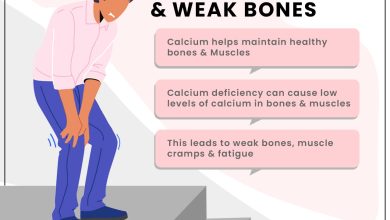Impact of Circumcision on Urinary Tract Infections

In many countries, infant circumcision is a common procedure for boys. It can lead to infection and other side effects. It is important to consider alternatives to circumcision when considering your child’s needs. This article will provide you with a review of the available literature about male circumcision and its side effects. It will also discuss the effects of circumcision victoria on the development of urinary tract infections (UTI).
Review of literature about male circumcision
A review of literature on male infant circumcision revealed a variety of risks and complications. Most of the studies identified problems with the surgical technique and included data from multiple sources. Some sources were ignored or discounted, which could have led to a poor picture of circumcision risks. These risks include harm to the child’s psyche and physical well-being. Also, circumcised men often suffer from emotional and social consequences. These consequences can vary greatly from community to community.
Complications of male circumcising include severe bleeding after circumcision, which can be fatal in severe cases. Other complications include an infection, insufficient removal of the foreskin, urethrocutaneous fistula, and loss of penile sensitivity. Penile hematoma and glanular amputation are some of the more serious complications.
One of the most common reasons for circumcising is to reduce the risk of sexually transmitted diseases (STDs) for infants. It has been shown that male circumcision may be beneficial in preventing HIV in children, but this protective effect is less significant in countries with high HPV prevalence. This benefit does not appear to apply to any other procedures that involve genital structures.
The highest risk of circumcising complications is associated with performing the procedure at a later age. A higher risk is also associated with circumcising that is performed without strict antisepsis. Further, the procedure must be performed in a sterile environment by an experienced provider. Furthermore, some risks are genetic. Parents should inquire about the qualifications and experience of the provider. They can also decline the procedure if they choose not to have their baby circumcised.
Methods of circumcision
There are two major schools of thought regarding the ritual of infant circumcising. Some rabbis reject the ritual, while others have been adamant that it is essential to the health of the infant. Both schools have supporters and opponents. The ritual is criticized by those who believe it is too risky for the child.
The Pollock Technique is used to perform male circumcisions. It involves separating penis shaft and foreskin with hemostats. This procedure is performed on an infant by first applying local anesthetic to the foreskin. Next, the surgeon applies a hemostat to the foreskin.
Plastibell is another method for infant circumcising. This involves placing the baby on a flat surface and covering the lower body with a surgical drape. The doctor will examine the penis, using a probe to separate it from the penis head. A PlasticRing Circumcision is placed underneath the skin and a secure suture is attached to it.
The most controversial method of circumcision, known as metzitzah b’peh, has been linked to two cases of severe brain damage and at least one death. Some Orthodox rabbis believe that metzitzah-b’pe is dangerous. Two cases of this were discovered by the health department in October. The families did not want to reveal the name of the mohel who performed the circumcising.
Results from a Medline search for male circumcision
Many countries practice infant male circumcision, both in formal and informal settings. Health service providers are trained in the procedure. These health service providers include doctors, midwives and other health care professionals. They must be trained in the procedure and educated about aseptic techniques, ways to reduce morbidity, mortality, and follow up care for parents and caregivers.
Research has been published highlighting the benefits of circumcision in male infants. However, the studies have tended to minimize the risks associated with this procedure. Studies also ignore the potential harm, reflecting the American belief that the foreskin is worthless. These studies are used by circumcision advocates to support their controversial procedure.
The American medical literature on circumcising has a history of bias. Almost all American studies of circumcision focus on its presumed benefits. The American Academy of Pediatrics, for example, established a task force to examine whether circumcision is beneficial, and decide whether it is necessary. These studies always find benefits, whether it is treating epilepsy in 1800s or preventing sexually transmitted disease today.
A recent meta-analysis looked at the safety and effectiveness early infant male circumcision. The findings showed that circumcision reduces the risk of urinary tract infections (UTI), which is the most common type of infection in infants. The reduction in UTI rates was also sustained well into adulthood.
Impact of circumcision on UTI
Several studies have been conducted to determine the impact of infant circumcision on UTI risk. These studies include cohort studies, case-control studies, and meta-analysis. There are concerns about their methods. These studies may not reflect the entire population. Low levels of male circumcising could lead to biased results in cohort studies.
However, several studies have found that circumcision is beneficial for health. It reduces the risk of urinary tract infection and may prevent the transmission of syphilis. In fact, the CDC has recently released recommendations for circumcision counseling. These guidelines also address the issue regarding circumcision in adolescents and adult males. Furthermore, large cohort studies have shown that circumcision is associated with lower rates of UTI and that the number of circumcisions required to prevent hospitalization from UTI is low.
Researchers are still studying the impact of infant circumcision on UTI. However, they suggest that it may be beneficial for boys with a history urinary tract abnormalities. For example, premature birth exposes babies to infections, and infants who undergo catheterization are at higher risk for UTI. Furthermore, premature babies are not circumcised, which may explain the increased risk of UTI among intact infants.
One study showed that UTI risk is reduced by 10% following infant circumcision. While this reduction is small, it is a compelling argument for circumcision. However, it should be noted that this effect is only seen in boys who have a previous history of UTI or are at high risk for repeat UTIs. Additionally, circumcision has a number other health protective benefits.
Impact of circumcision on STIs
The AAP has recently updated its policy on infant circumcision. This policy is based upon a review of all scientific evidence. The new policy shows a clearer picture of the benefits of circumcision. This policy is based on studies that show circumcision reduces the risk of acquiring both bacterial and viral STIs.
To conduct a meta-analysis, the researchers used data from a cohort study. They assessed the prevalence of chlamydia and trichomoniasis in males living in a mining community. They also assessed the circumcision status of the men using an interviewer-administered questionnaire. The participants reported whether or not they had been circumcised or had a history of sexually transmitted infections. Although the study didn’t find a causal relationship between circumcisions and STIs it did indicate that there may be a significant effect.
Infant circumcision can reduce the risk of STIs, particularly in non-Muslim males. It can also help prevent HIV and other STIs. The CDC released documents for healthcare providers to help them provide accurate information to their patients. These documents are intended to help clinicians understand the safety and benefits of circumcision. Personal decisions about circumcision are influenced by various factors, including health, religious, cultural, and familial considerations.
The prevalence of STIs in uncircumcised men was 27.4%, while it was 22.8 % for circumcised men. Medical circumcision was also found to be significantly protective against STI syndrome.
Recommendations to parents
Parents should take certain steps to help their child cope with the pain after infant circumcision. These steps include skin-to-skin contact and breastfeeding for emotional comfort. Breastfeeding stimulates the sucking reflex, which a baby finds soothing. A folded diaper can be helpful in avoiding rubbing the area.
Parents must ensure that their penis is clean. This will help avoid infection and promote healing. Using a mild soap will help prevent skin irritation. To prevent infection, parents should wash the wound and then change the dressing. They should also use petroleum jelly to prevent the penis from sticking to the diaper.
Parents may struggle to decide whether or not to circumcise their child. Fathers might be worried about the appearance of their son’s penis, while others may be more concerned about the risks and benefits. Another factor that may influence the decision is religious and cultural traditions.
Parents should talk to their doctor about concerns before they perform infant circumcision. The procedure can be done in the hospital before the mother or child are discharged. Alternatively, it can be done as an outpatient procedure under local anesthesia as late as three months after birth. However, a general anesthetic is usually needed after three months.
Parents should also be aware that infant circumcision is an elective procedure. It is not required by law, hospital policies, or religious requirements. Parents may wish to have it for religious, cultural, or social reasons. Some religions have circumcised male newborns for centuries. This practice is less common in other parts of the globe. The doctor who will perform the procedure should be consulted by parents. This doctor may be a pediatrician, urologist, or a pediatric surgeon.




